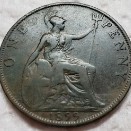Nice Old Axe Head
-
Similar Content
-
- 7 replies
- 2,764 views
-
- 12 replies
- 729 views
-
- 19 replies
- 1,061 views
-
New Permission Made Me Go To An Old One (update 2) 1 2
By F350Platinum,
- relic detecting
- relic found
- (and 1 more)
- 17 replies
- 8,802 views
-
- 19 replies
- 6,268 views
-
- 23 replies
- 2,094 views
-
-


.thumb.jpg.8761b3d9b3da119b9e6d1912f67275ad.jpg)




Recommended Posts
Create an account or sign in to comment
You need to be a member in order to leave a comment
Create an account
Sign up for a new account in our community. It's easy!
Register a new accountSign in
Already have an account? Sign in here.
Sign In Now